
Moorabbin Airport is a mostly general aviation airport for light aircraft located in between the southern Melbourne suburbs of Heatherton, Cheltenham, Dingley Village and Mentone. It also receives commercial airline service. The airport grounds are treated as their own suburb, and share the postcode 3194 with the neighbouring suburb of Mentone. With a total of 274,082 aircraft movements, Moorabbin Airport was the second busiest airport in Australia for the calendar year 2011.
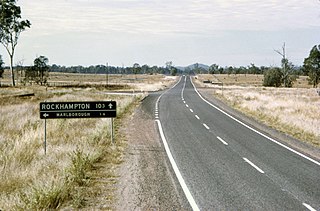
Marlborough is a rural town and coastal locality in the Livingstone Shire, Queensland, Australia. In the 2021 census, the locality of Marlborough had a population of 154 people.

The Capricorn Coast is a stretch of coastline in Central Queensland, Australia and is part of the Shire of Livingstone.

The Bell 206 is a family of two-bladed, single- and twin-engined helicopters, manufactured by Bell Helicopter at its Mirabel, Quebec, plant. Originally developed as the Bell YOH-4 for the United States Army's Light Observation Helicopter program, it was not selected by the Army. Bell redesigned the airframe and successfully marketed the aircraft commercially as the five-place Bell 206A JetRanger. The new design was eventually selected by the Army as the OH-58 Kiowa.

The Shire of Livingstone is a local government area located in the Capricornia region of Central Queensland, Queensland, Australia, to the immediate north and east of the regional city of Rockhampton. The shire, administered from the coastal town of Yeppoon, covers an area of 11,758 square kilometres (4,539.8 sq mi), and existed as a local government entity from 1879 until 2008, when it amalgamated with several other councils to become the Rockhampton Region. The Shire was re-established on 1 January 2014 following a successful de-amalgamation referendum in 2013.

On 10 June 1960, a Fokker Friendship passenger aircraft operated by Trans Australia Airlines (TAA) was on approach at night to land at Mackay, Queensland, Australia when it crashed into the sea. All 29 people on board Trans Australia Airlines Flight 538 were killed.
On 16 July 1983 a British Airways Helicopters commercial Sikorsky S-61 helicopter, Oscar November (G-BEON), crashed in the southern Celtic Sea, in the Atlantic Ocean, while en route from Penzance to St Mary's, Isles of Scilly in poor visibility. Only six of the twenty-six people on board survived. It was Britain's worst helicopter civil aviation accident at the time.

Rockhampton Airport is a major Australian regional airport in West Rockhampton, Queensland that services the city of Rockhampton, with direct flights to various major centres in Queensland, as well as Melbourne in Victoria. Flights have previously operated to the New South Wales capital, but were discontinued due to lack of interest in Sydney. The airport runway has the capability to handle aircraft such as the Airbus A380, Boeing 747 and Boeing 777.

On 4 September 2000, a chartered Beechcraft 200 Super King Air departed Perth for a flight to the mining town of Leonora, Western Australia. The aircraft crashed near Burketown, Queensland, Australia, resulting in the deaths of all eight occupants. During the flight, the aircraft climbed above its assigned altitude. When air traffic control (ATC) contacted the pilot, the pilot's speech had become significantly impaired, and he was unable to respond to instructions. Three aircraft intercepted the Beechcraft, but were unable to make radio contact. The aircraft continued flying on a straight north-easterly heading for five hours, before exhausting its fuel and crashing 65 km (40 mi) south-east of Burketown. The crash became known in the media as the "ghost flight".

Turkish Airlines Flight 634 was a scheduled domestic passenger flight from Istanbul Atatürk Airport to Diyarbakır Airport in southeastern Turkey. On 8 January 2003 at 20:19 EET, the aircraft operating the flight, a British Aerospace Avro RJ100, struck the ground on final approach approximately 900 metres (3,000 ft) short of the runway threshold during inclement weather conditions. In the following collision with a slope, a post-crash fire broke out, killing 75 of the 80 occupants, including the entire crew. This is the deadliest aviation accident to involve the BAe 146.
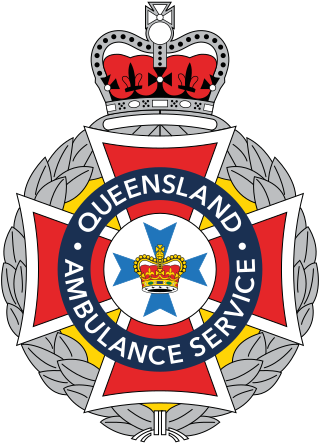
The Queensland Ambulance Service (QAS) is the state emergency ambulance and patient transport provider in Queensland, Australia. QAS is part of the Queensland Government under the Queensland Health portfolio and is one of the largest ambulance services in the world.

A Bell 206L-4 LongRanger helicopter, tail number TC-HEK, operated by Medair while on a charter flight en route from Çağlayancerit in Kahramanmaraş Province to Yerköy in Yozgat Province, crashed on March 25, 2009 at around 16:00 EET when it struck Mount Keş in central Turkey. The pilot and four passengers, including the leader of the Great Union Party (BBP) Muhsin Yazıcıoğlu, were killed in the accident. Only one passenger survived the crash with injuries and made an emergency call. Due to harsh weather conditions at the crash site, the victims and the wreckage could be recovered only after two days, and the injured passenger was found dead under snow five days later.
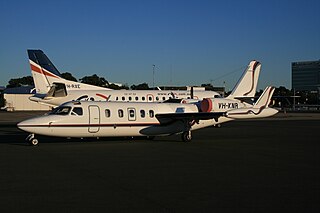
The 2009 Pel-Air Westwind ditching or Norfolk Island ditching was an aircraft accident on 18 November 2009 near Norfolk Island, Australia. A Westwind II jet operated by Pel-Air was conducting an air ambulance flight for CareFlight International when it was forced to ditch after being unable to land in bad weather and not having sufficient fuel to divert to an alternate destination.

The Spirit of Texas, a Bell 206L-1 LongRanger II, is the first helicopter to complete a round-the world flight.

Caboolture Airfield is an aerodrome catering to general aviation and ultralight aircraft located in Caboolture, Queensland, Australia, approximately 55 km (34 mi) north of the state capital Brisbane, adjacent to the Bruce Highway. The airfield is maintained and operated by the Caboolture Aero Club Incorporated and shares a large training area with nearby Caloundra Airport and Redcliffe Airport. The airfield is a popular site for the restoration of historic aircraft and a number of associated businesses are located onsite.

On 1 October 2012, Riama, a 1934 vintage de Havilland DH.84 Dragon passenger aircraft, crashed in Queensland, Australia, while flying from Monto to Caboolture. Radio contact was lost about an hour after the pilot reported to be in cloud with zero visibility. The wreckage was found in heavily wooded, hilly terrain two days later. The pilot and five passengers were killed in the accident.
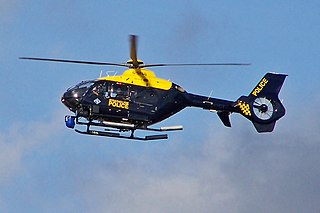
On 29 November 2013, a police helicopter operated by Bond Air Services for Police Scotland crashed into The Clutha, a pub in central Glasgow, killing all three crew on board and seven patrons of the pub. Thirty-one more people in the pub were injured.

Whyalla Airlines Flight 904 was a scheduled commuter flight, operated by a Piper PA-31 Navajo which crashed while attempting to ditch in the Spencer Gulf, South Australia after suffering failures of both engines on the evening of 31 May 2000. All 8 people on board the aircraft were killed as a result of the accident. The findings of a subsequent investigation by the Australian Transport Safety Bureau highlighting the airline's operating procedures as a key factor leading to the accident were later overturned after they were contradicted by evidence presented at a coronial inquiry into the deaths of those on board the flight. The safety implications arising from the accident led to a recall by engine manufacturer Textron Lycoming which saw close to 1000 aircraft grounded worldwide while defects were rectified at an estimated cost of $A66 million. Australia's aviation regulator, the Civil Aviation Safety Authority also mandated lifejackets be carried on all aircraft operating over water after the crash.
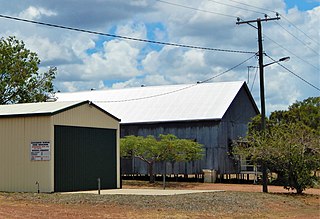
Gogango is a rural town and locality in the Rockhampton Region, Queensland, Australia. In the 2021 census, the locality of Gogango had a population of 184 people.
Sir Graham Edward McCamley MBE is a prominent Australian cattle baron, best known for establishing a cattle empire in Queensland where he bred premium Brahman stud herds.


















